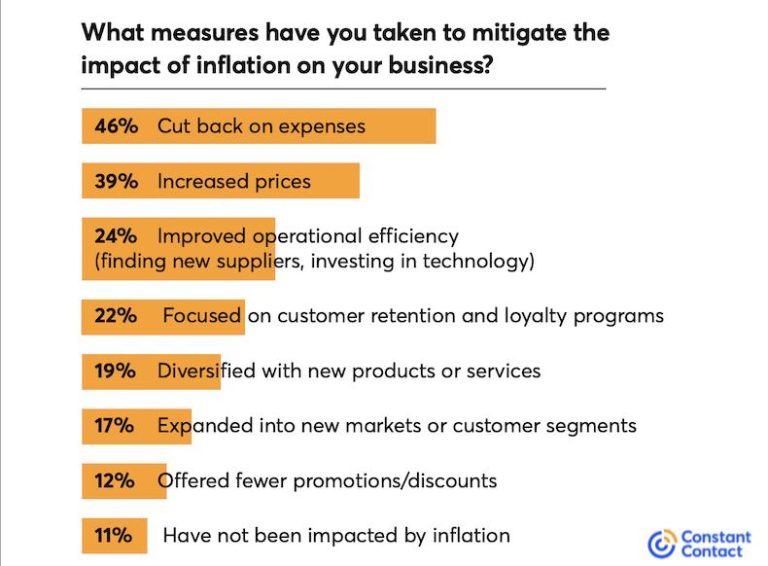Businesses are confronting a new phase of price pressure as costs for materials, labor, shipping, and borrowing remain elevated, squeezing margins and testing pricing power. Despite signs of easing in headline inflation, the latest government data and corporate updates point to stubborn input costs that are proving hard to shake.
Manufacturers and service firms alike report higher wage bills and interest expenses on top of lingering supply-chain and logistics fees. Many are raising prices or cutting costs to protect profitability, but consumer pushback is building and volumes are softening in some categories. Economists warn that sticky cost pressures could either keep consumer prices higher for longer or compress profits, threatening investment and hiring as the year progresses.
Table of Contents
- Energy and material costs outpace revenues, squeezing margins as firms calibrate price pass through and productivity gains
- Wage pressures lift unit labor costs, steering companies toward automation, reskilling and targeted retention
- Steps to shore up resilience, renegotiate supplier terms, hedge key inputs, streamline inventories and deploy data driven dynamic pricing
- In Summary
Energy and material costs outpace revenues, squeezing margins as firms calibrate price pass through and productivity gains
Companies across manufacturing, retail, and services report input bills rising faster than sales growth, compressing operating margins as executives fine-tune price pass-through while racing to unlock productivity. With power and feedstock markets still volatile and supplier quotes resetting higher, managers are narrowing discount windows, expanding indexation clauses, and reworking contracts to balance demand elasticity with cost recovery. Leaders describe a pivot toward efficiency-driven capex, mix upgrades, and tighter inventory turns, even as wage floors and logistics bottlenecks complicate the outlook. Against this backdrop, finance chiefs are stress-testing scenarios around hedging roll-offs, energy exposure, and currency swings, aiming to protect cash while defending share in increasingly price-sensitive end markets.
- Pricing actions: targeted hikes, surcharges, and selective pack-size changes to preserve unit economics without eroding volumes.
- Efficiency levers: automation pilots, yield improvements, and throughput gains to lift output per labor hour.
- Procurement shifts: dual-sourcing, renegotiated terms, and longer tenure contracts to dampen input volatility.
- Working-capital discipline: faster receivables cycles, leaner inventories, and stricter credit controls.
- Risk management: expanded energy and FX hedges, plus revised exposure limits as legacy protections expire.
Wage pressures lift unit labor costs, steering companies toward automation, reskilling and targeted retention
Companies report that payroll inflation is outpacing productivity, compressing margins and accelerating shifts in capital allocation. Executives are prioritizing technology that cuts routine labor, redeploying staff into higher-value roles, and ring‑fencing key talent to stabilize operations. Manufacturers, logistics providers and service-heavy sectors are moving quickest, citing the need to protect service levels while limiting price pass‑through. Labor negotiations and turnover remain watchpoints, with leadership tracking whether efficiency gains keep pace with pay growth over the next two quarters.
- Automation acceleration: expanded use of robotics, AI scheduling, self‑service checkout and back‑office workflow tools to reduce low‑skill hours per unit.
- Reskilling at scale: fast‑track training in maintenance, data literacy and supervisory roles to leverage tech investments and preserve institutional knowledge.
- Targeted retention: selective bonuses, career ladders and flexible shifts for mission‑critical roles where replacement costs and downtime are highest.
- Pricing and contracts: tighter indexation clauses and dynamic surcharges to offset wage-driven cost volatility without losing key accounts.
- Productivity metrics: closer monitoring of output per hour, absenteeism, and throughput, tying variable pay to measurable efficiency gains.
Steps to shore up resilience, renegotiate supplier terms, hedge key inputs, streamline inventories and deploy data driven dynamic pricing
As cost pressures spread across supply chains, executives are shifting from episodic fixes to disciplined playbooks that protect gross margin, preserve service levels, and release cash without stalling growth.
- Fortify the supply base: diversify critical components, map tier‑2 exposure, and embed SLAs; trade multi‑year volume commitments for index‑linked pricing with floors/ceilings, performance rebates, vendor‑managed or consignment stock, and extended payment terms.
- Lock in critical commodities: implement a hedging ladder using futures/options, collars, and FX forwards; align hedge tenors with demand visibility, manage basis risk, and codify governance with clear limits and hedge accounting treatment.
- Lean inventories, faster turns: run ABC/XYZ segmentation, recalibrate safety stocks to volatility and lead‑time variance, tighten reorder points, deploy postponement and SKU rationalization, and maintain a weekly SIOP cadence to balance “just‑in‑case” with agility.
- Dynamic, data‑led pricing: estimate elasticity by segment, build cost pass‑through rules and guardrails, scrape competitor signals, use A/B tests and win‑loss data, apply discounts surgically, and track realization and churn to validate moves.
- Telemetry and governance: stand up a single source of truth pulling ERP/MES/CRM data via APIs; monitor a margin bridge, cash conversion cycle, OTIF/fill rate, forecast error, and price‑cost lag; run a cross‑functional “inflation room” with scenarios and trigger‑based actions.
In Summary
For now, companies are walking a narrow line between preserving margins and protecting demand, with pricing power fragmenting by sector and size. Executives are leaning on cost controls, automation and selective price increases, but the scope for further pass-through appears to be narrowing as consumers push back.
Whether inflation pressures ease from here will hinge on input costs, wage settlements and the strength of consumer spending, alongside the next moves from central banks. With earnings guidance under closer scrutiny and fresh inflation and jobs data due in the coming weeks, investors and policymakers will get a clearer read on how long firms can absorb higher costs-or how much more they will ask customers to pay.


